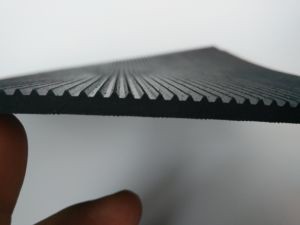Factory Manufacture Industrial Chloroprene Rubber/Neoprene/EPDM/NBR/Nitrile/SBR Rubber Sheet
Product description
NBR has excellent oil resistance. In typical NBR structure, trans-formation accounts for about 78%. Because the molecular chain structure of NBR contains cyano, its oil resistance (such as resistance to mineral oil, liquid fuel, animal and vegetable oil and solvent) is better than that of natural rubber, neoprene and styrene-butadiene rubber. Compared with other rubbers, NBR has a wider range of service temperature, and its long-term service temperature is 120 ℃. At the same time, NBR has good low temperature resistance, with a minimum glass transition temperature of - 55 ℃. [1]

NBR has good chemical stability and good processing performance. With the increase of acrylonitrile content in its structure, its relative density increases, the curing rate increases, and the tensile strength increases, but the resilience decreases, and the cold resistance becomes poor. Because the cyano group in NBR is easy to polarize in the electric field, the dielectric property of NBR is reduced, which is semiconductor rubber. NBR can be divided into five categories according to the ACN content: ultra-high, high, medium-high, medium-low acrylonitrile. There are two production methods: continuous polymerization and batch polymerization. The continuous polymerization method is usually used for small variety and large yield production with low consumption. The batch polymerization method is applicable to multiple varieties and small batch production, and the engineering construction consumption is high. [1]



Recommended products



